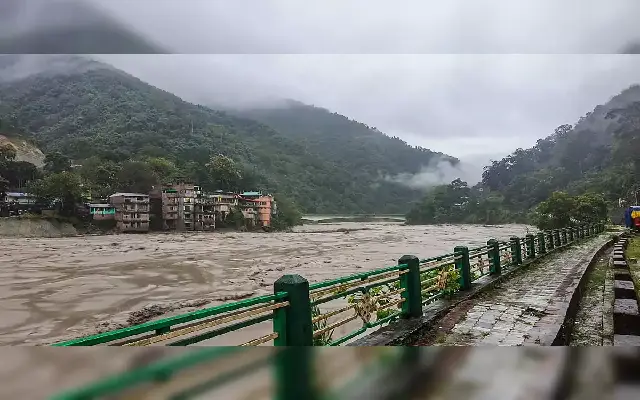In October of the previous year, a catastrophic event unfolded in India’s northeastern state of Sikkim, shattering the tranquility of the region. A glacial lake burst through a major dam, wreaking havoc on the Teesta III hydro-electric project, the largest of its kind in the area. This calamity not only devastated infrastructure but also sparked a political firestorm, laying bare the alleged corruption and opacity surrounding the state’s infrastructure development initiatives.
The Teesta III project, envisioned as a transformative force for Sikkim’s economy, has instead become a symbol of mismanagement and malfeasance. With the impending national elections scheduled for April 19, the defunct Teesta III looms large in Sikkim’s political landscape. As the state gears up for both national and legislative assembly elections, the controversies surrounding the dam project have taken center stage.
The aftermath of the flood left Sikkim reeling, with substantial losses, loss of lives, and widespread destruction of property and infrastructure. In response, the state government, led by the Sikkim Krantikari Morcha (SKM) party, reluctantly agreed to sell its majority stake in Teesta III to the Andhra Pradesh-based Greenko Group, pending approval from India’s competition regulator.
However, questions surrounding the project persist. The Bharatiya Janata Party (BJP), eyeing a third term in power under Prime Minister Narendra Modi, has vowed to launch a central bureau of investigation (CBI) probe into the entire Teesta III saga if elected. Allegations of corruption from the signing of the memorandum of understanding (MoU) to the dam’s collapse and subsequent sale to a private entity loom large over the project.
Amidst this turmoil, Greenko Group has emerged as a key player, committing $1.5 billion to acquire Teesta III, despite significant damage caused by the floodwaters. The acquisition, however, raises eyebrows, given the murky circumstances surrounding the project’s history and ownership.
The genesis of the Teesta III project traces back to 2004 when Sikkim embarked on an ambitious journey to harness its water resources for hydroelectric power generation. Spearheaded by then-Chief Minister Pawan Chamling, the project aimed to diversify the state’s revenue sources beyond tourism. However, the execution of this vision was marred by irregularities and questionable decisions.
The selection process for the project’s development consortium raised eyebrows, with concerns over the lack of experience of the chosen entities. Despite warnings and red flags, the project proceeded, plagued by delays and cost overruns. The subsequent sale of stakes to foreign private equity investors further muddied the waters, with allegations of preferential treatment and insider dealing.
As the project neared completion, it became apparent that the lofty revenue projections touted by its proponents were far from reality. The dam’s commissioning was marred by operational deficiencies, leading to further financial burdens on the state. The subsequent flood disaster only exacerbated the project’s woes, leaving Sikkim grappling with the aftermath and mounting debts.
The political fallout from the Teesta III debacle has been swift and fierce. Opposition parties, notably the Sikkim Democratic Front (SDF), have lambasted the SKM government for its handling of the project and subsequent disinvestment. Legal battles and public outcry have underscored the deep-seated mistrust and disillusionment with the state’s leadership.
Amidst this chaos, the Narendra Modi government’s response has been scrutinized. Despite the scale of the disaster, no substantial assistance or intervention has been forthcoming, raising questions about priorities and accountability at the federal level.
As Sikkim grapples with the aftermath of the Teesta III disaster, the specter of future hydroelectric projects looms large. The contentious Teesta Stage IV and Panan projects face renewed scrutiny, with concerns over environmental impact and community displacement. The state’s hydroeconomic ambitions stand at a crossroads, with the need for sustainable and transparent development practices paramount.
In conclusion, the Teesta III saga serves as a cautionary tale of unchecked ambition, regulatory failures, and political expediency. The fallout from this disaster reverberates far beyond Sikkim’s borders, highlighting the inherent risks of mega-infrastructure projects and the imperative for accountable governance. As the state braces for elections and confronts its future, the lessons learned from Teesta III must inform a more responsible approach to development and governance.

















